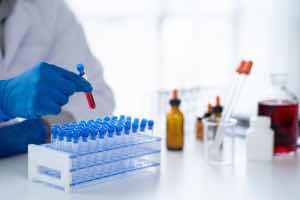
Real People Stories – Jeniffer
Viral or bacterial load? B12 deficiency? Hypoxia? What can be determined by an Anaemia General CBC Full Blood Test? I take great care to maintain my health, and about once every six months, I take a complete or Anaemia Full count (CBC) and urine test to monitor my iron deficiency and general health. Doctors traditionally prescribe this exam to all patients, whether GPs, gynaecologists, endocrinologists, or other specialists. Why is it important to pass interesting facts?
Blood is a liquid that flows through veins and arteries. It supplies muscles, organs, and tissues with oxygen, which we all need for normal life. The heart contracts constantly to pump.
General Interesting Data
- Volume = 5-6 litres, 6-8% of body weight.
- 3-4 litres is the volume circulating
- 1.5-2 litres are deposited in the vessels of the abdominal organs, subcutaneous tissue, etc.
- It consists of plasma (yellowish liquid) and formed elements of the blood (erythrocytes, leukocytes, platelets)
- The pH 7.35-7.45
Functions
- Transport (carries oxygen)
- Respiratory
- Nutritious (trophic)
- Excretory
- Thermoregulatory
- Protective
- Humoral (regulatory)
- Homeostatic
Full Blood performs many functions, and the CBC Complete Count test can monitor the body’s overall condition.
So, briefly about the procedure itself.
Preparation and Delivery
The sample should be taken on an empty stomach in the morning, ideally 14 hours without food. Then, the result will be more indicative, but usually, the references are 8-14 hours of fasting.
The evening before the sample, avoid alcohol, fatty and fried foods.
You can drink a little water in the morning; even those with “thick” or heavy issues need it.
Come and sit down at the lab technician’s table; the required complete area is wiped with alcohol and either pierced with a needle or it is taken with a syringe or butterfly.
The butterfly method is the most invisible and painless way to take material because it takes material from children. Usually, they take it almost painlessly, but some clumsy ones leave bruises.
I have never had any bruises after taking a sample.
Types
I usually do a general Anaemia Finger Prick blood test, but sometimes I do a white cell count.
But what is the leukocyte formula:
The leukocyte formula is the percentage ratio of different types of leukocytes (neutrophils, lymphocytes, eosinophils, monocytes, and basophils).
Components Analyzed
What do they look at on the CBC checkup:
-
Erythrocyte
There are many erythrocytes, the main cells. Their function is precisely respiratory because haemoglobin is transferred to them.
Their structure maintains the pH, participates in clotting, and contains antigens determining a person’s type.
The full volume of erythrocytes is the haemoglobin content in the erythrocyte as a percentage and in complete absolute terms. The red cell distribution weight index (RDW) measures the size of the smallest and largest cells. And this difference in ratios is calculated. Normally, all red cells should be approximately the same size.
Red cells are generally the main carriers of oxygen; as I already said, they contain haemoglobin. This is the largest cell mass, amounting to as much as 2 kg. And here is an important point: red cells live only 100-120 days.
Therefore, monitoring Anaemia composition for three months after some nutritional support is better to see the changes fully.
-
Leukocytes
They protect us from various microorganisms, bacteria, and toxins, participate in immune reactions, are responsible for healing damaged tissues, clotting, and transport, and also carry some substances.
Leukocytes, in turn, are a large group with many subgroups.
If leukocytes are elevated, then the bacterial load, while IV drips are not allowed, and neutrophils are often normal or elevated.
-
Lymphocytes
They are divided into different subgroups.
There are killer lymphocytes, helpers, suppressors, T cells of the immune system and B lymphocytes.
Lymphocytes themselves form protective antibodies for us.
They absorb and destroy foreign cells, form specific immunity, and provide immunological memory.
If a person, for example, had chickenpox and everything was going well with his immunity at that time, the function of lymphocytes would be preserved. He would develop immunity. However, anaemia research tells us from extensive full tests that if there are such cases, more often race, where people can get chickenpox twice in their life, then this indicates that their leukocytes did not work well, and this specific complete immunity did not form.
Lymphocytes are also responsible for the formation of immunity after vaccinations.
-
Platelets
They are not truly cellular formations.
They represent detached parts of the protoplasm of megakaryocytic of the bone marrow.
-
Haemoglobin
Decreased in various types of anaemia,
increased – often with dehydration, hypoxia. In pregnant women, haemoglobin fluctuates throughout the day.
-
ESR
Increased during pregnancy, deficiency of B9, B12, and inflammatory diseases.
-
Eosinophils
Increased in parasitic diseases, allergies, hypothyroidism, autoimmune diseases, and rheumatism.
And this is only a small part!
I recommend that everyone undergo a report every six months. Kits are affordable, and the results are delivered quickly.
Why 4 stars?
Although it is informative, there is always a human factor that can distort the result. Incorrect blood collection, storage and transportation, and many companies also save on equipment maintenance…
So, in addition to the CBC, I recommend taking other full Count tests, which I will gradually but completely discuss here.
Thank you for reading to the end! Good health to all 💙
